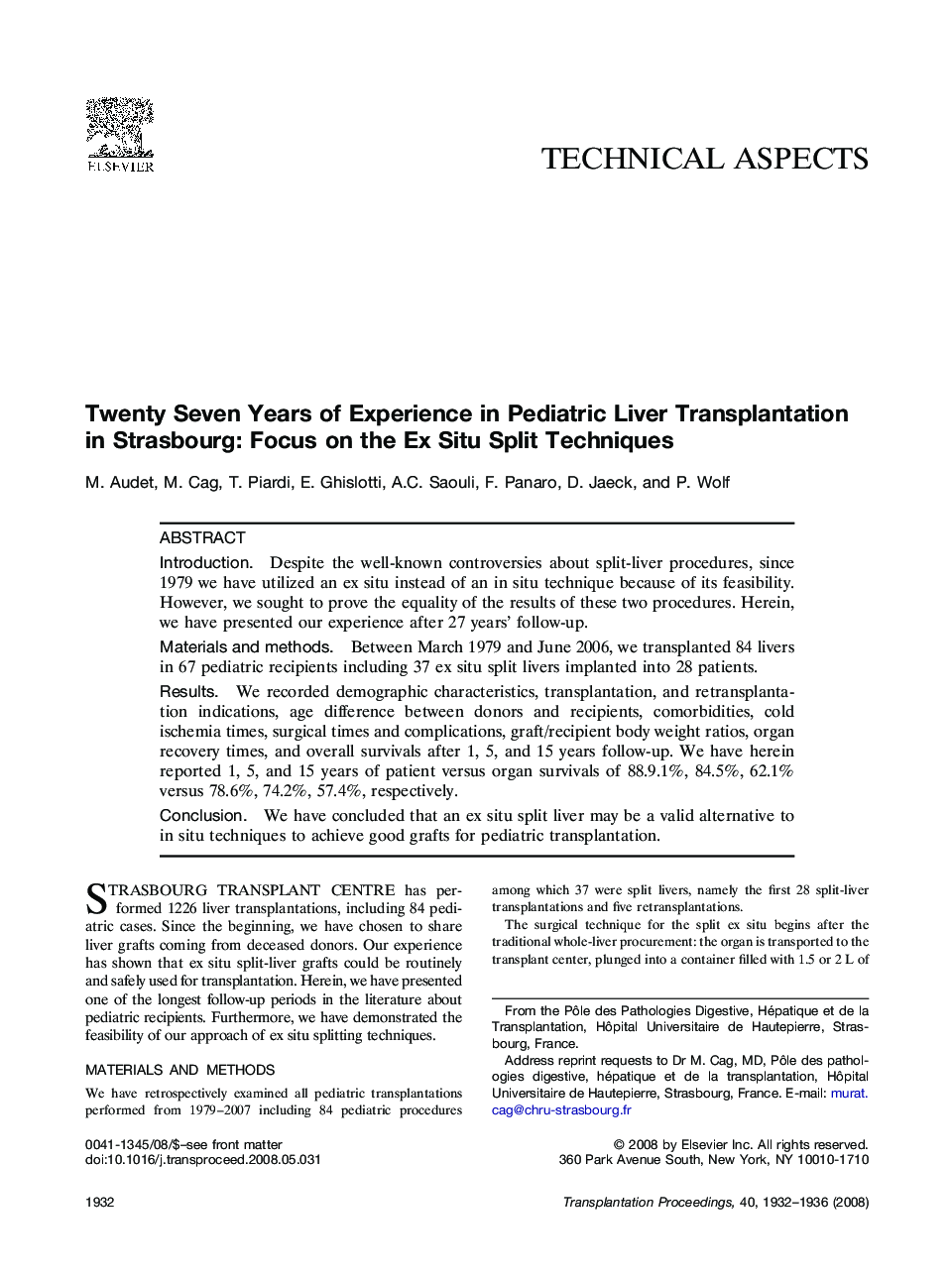| Article ID | Journal | Published Year | Pages | File Type |
|---|---|---|---|---|
| 4260289 | Transplantation Proceedings | 2008 | 5 Pages |
IntroductionDespite the well-known controversies about split-liver procedures, since 1979 we have utilized an ex situ instead of an in situ technique because of its feasibility. However, we sought to prove the equality of the results of these two procedures. Herein, we have presented our experience after 27 years' follow-up.Materials and methodsBetween March 1979 and June 2006, we transplanted 84 livers in 67 pediatric recipients including 37 ex situ split livers implanted into 28 patients.ResultsWe recorded demographic characteristics, transplantation, and retransplantation indications, age difference between donors and recipients, comorbidities, cold ischemia times, surgical times and complications, graft/recipient body weight ratios, organ recovery times, and overall survivals after 1, 5, and 15 years follow-up. We have herein reported 1, 5, and 15 years of patient versus organ survivals of 88.9.1%, 84.5%, 62.1% versus 78.6%, 74.2%, 57.4%, respectively.ConclusionWe have concluded that an ex situ split liver may be a valid alternative to in situ techniques to achieve good grafts for pediatric transplantation.
